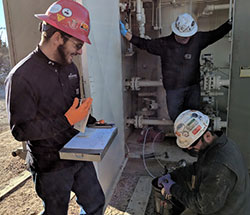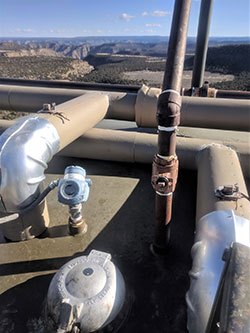During the winter, the Uintah Basin suffers from extreme ozone events that can last for many days and negatively impact human health. Volatile Organic Compounds (VOCs) are important ozone precursors, and the major source of VOCs are oil and gas operations in the basin. Unfortunately, current emission inventories are known to underestimate VOCs from these sources, leading to poor performance of photochemical ozone modeling. Photochemical modeling is a helpful tool for understanding how changes in oil and gas production or emission control technologies could impact ozone formation. Additionally, modeling is often required for regulatory purposes.
This study builds on previous work, and will focus on strategic sampling of oil and gas operations to better understand how different equipment, processes, and geologic formation can change VOC composition throughout the basin. These samples will be used to improve the emission inventory, which in turn will be used in photochemical modeling. A better understanding of VOC sources and which VOCs are most important for ozone formation will help guide emission reduction strategies in the basin.
- Principal Investigators: Trang Tran, Huy Tran (BRC – USU)
- Study Period: July 1, 2019, – March 31, 2021
- Funded by Science for Solutions Research Grant: $140,000
- DAQ Contact: Chris Pennell (cpennell@utah.gov)


Related Project Lists
Relevant Documentation
- Scope of Work (83 KB)
- Final Report (113.4 MB)
- Supplemental Report (4.3 MB)

